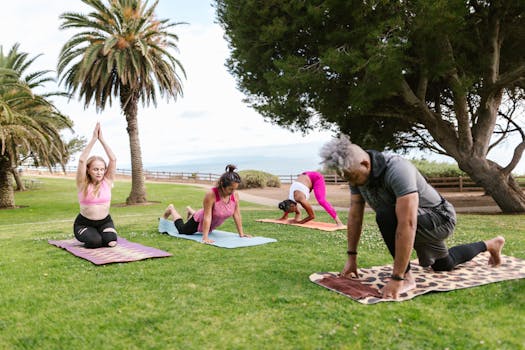The Transformative Role of Breathwork in Yoga: Techniques for a Deeper Practice
Takeaways: Breathwork is an essential component of yoga that enhances physical and mental well-being. Techniques such as pranayama and diaphragmatic breathing can deepen your practice, increase mindfulness, and promote relaxation. Incorporating these practices can lead to a more fulfilling yoga experience.
Breathwork, or the conscious control of breathing, is a fundamental aspect of yoga that often goes overlooked. While many practitioners focus on postures and sequences, it is the breath that truly connects the body and mind, creating a profound experience during yoga practice. In this article, we will explore the role of breathwork in yoga, its benefits, and some effective techniques to integrate into your routine.
Understanding Breathwork in Yoga
Breathwork is derived from the Sanskrit word pranayama, which translates to “control of life force.” In yoga, it refers to various breathing techniques that enhance the flow of energy within the body. By regulating breath, practitioners can cultivate greater awareness, calm the mind, and energize the body.
Breath is often referred to as the bridge between the body and mind. When we focus on our breath, we anchor ourselves in the present moment, allowing for a deeper connection to our practice. Breathwork not only helps in improving physical performance in yoga poses but also supports emotional stability and mental clarity.
The Benefits of Breathwork

- Enhanced Mindfulness: Focusing on breath encourages a meditative state, helping to quiet the mind and bring awareness to the present.
- Improved Oxygenation: Proper breathing techniques increase oxygen flow to the body, which can enhance energy levels and improve overall health.
- Stress Reduction: Breathwork activates the parasympathetic nervous system, promoting relaxation and reducing stress.
- Greater Flexibility: Controlled breathing can help release tension in the body, allowing for a greater range of motion in yoga poses.
- Emotional Release: Breathwork can aid in processing emotions, leading to a sense of release and catharsis.
Effective Breathwork Techniques for Yoga

1. Diaphragmatic Breathing
This technique involves breathing deeply into the diaphragm rather than shallowly into the chest. To practice diaphragmatic breathing:
- Lie on your back with your knees bent or sit in a comfortable position.
- Place one hand on your chest and the other on your abdomen.
- Inhale deeply through your nose, allowing your abdomen to rise while keeping your chest still.
- Exhale slowly through your mouth, feeling your abdomen fall.
2. Ujjayi Breathing
Also known as “victorious breath,” Ujjayi breathing involves slightly constricting the throat to create a soft sound during inhalation and exhalation. This technique helps to maintain focus during your practice:
- Inhale deeply through your nose, constricting your throat slightly.
- Exhale through your nose while maintaining the constriction, creating an audible sound.
3. Alternate Nostril Breathing (Nadi Shodhana)
This breathing technique balances the body’s energy channels and promotes mental clarity:
- Using your right thumb, close your right nostril.
- Inhale deeply through your left nostril.
- Close your left nostril with your ring finger, release your right nostril, and exhale through your right nostril.
- Inhale through the right nostril, close it, and exhale through the left nostril.
Conclusion
Incorporating breathwork into your yoga practice can significantly enhance your overall experience. By focusing on your breath, you not only improve your physical practice but also cultivate a deeper connection with yourself. As you explore these techniques, remember that the breath is a powerful tool that can transform your yoga journey. For further reading and resources on breathwork and yoga, check out Yoga Journal, MindBodyGreen, and Verywell Mind.



